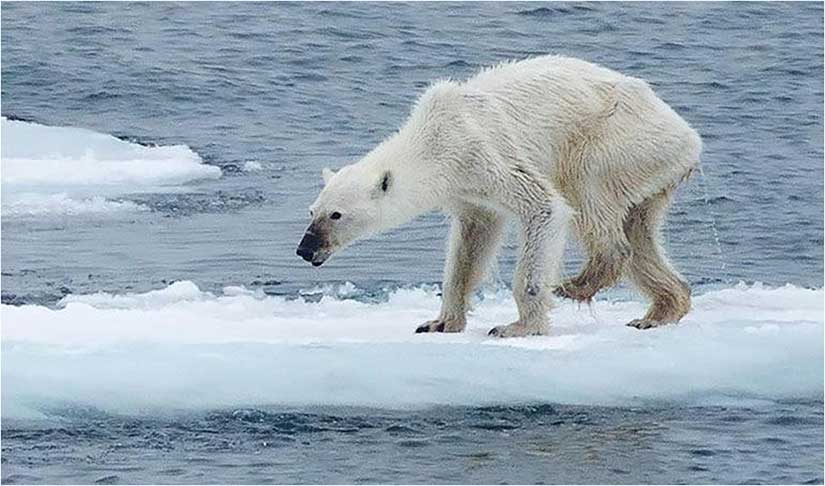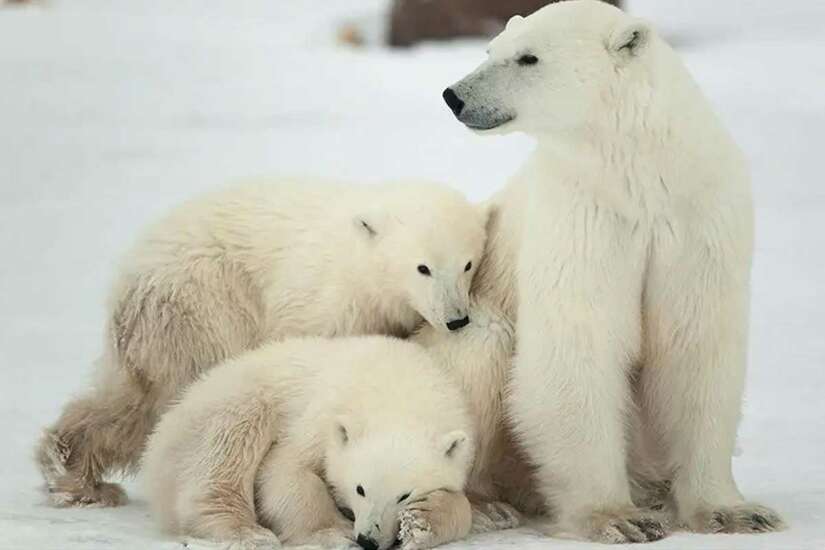International Polar Bear Day, celebrated on February 27th, highlights the plight of polar bears amidst the melting Arctic ice and climate change. It’s a day that calls for global awareness and action towards preserving these majestic creatures and their habitat. By focusing on reducing our carbon footprints and advocating for conservation efforts, this day underscores the importance of collective responsibility in safeguarding the future of polar bears and the Arctic ecosystem.
In the vast, icy expanse of the Arctic, where the cold winds whisper and the auroras dance, lives a creature as majestic as it is emblematic of the challenges of climate change: the polar bear. These magnificent creatures, known scientifically as “Ursus maritimus,” are not just the largest land carnivores on Earth, but they also play a crucial role in the Arctic ecosystem. With their thick, white fur that actually consists of clear, hollow tubes and a layer of fat up to 4.5 inches thick, polar bears are perfectly adapted to their chilly habitat. These adaptations not only keep them warm in freezing temperatures but also help them blend into their snowy surroundings, making them formidable hunters.
Polar bears are the largest bears and the largest land carnivores on Earth, with males weighing up to 1,500 pounds and females up to 800 pounds, though their size can vary widely across the 19 subpopulations found in the Arctic. These bears are apex predators, primarily feeding on seals, which they hunt from the edge of sea ice. Their life, reproduction, and very survival are intricately linked to the sea ice, making them uniquely vulnerable to climate change. As the planet wa rms, sea ice is melting earlier and forming later each year, reducing the bears’ hunting season and access to their primary food source. This has led to a decline in bear health, reproductive rates, and population in some areas.
As of the early 21st century, the global polar bear population is estimated to be around 22,000 to 31,000, but these numbers are on a precarious edge due to the ongoing loss of their sea ice habitat. Classified as “Vulnerable”by the International Union for Conservation of Nature (IUCN), polar bears face a future full of challenges. The primary threat to their survival is climate change, which is not only melting the sea ice they depend on but also causing more polar bears to come into contact with humans as they search further afield for food, leading to increased conflicts.
A recent study in Western Manitoba revealed that polar bears are losing weight and body mass during the increasingly longer periods they spend on land, where food is scarce. Remarkably, some bears lost up to 11% of their body mass. Attempts to adapt by resting more, foraging for vegetation or berries, or swimming in search of food have proven futile. The study’s findings are alarming, highlighting the bears’ inability to compensate for the lack of a seal-based diet when forced ashore. This predicament is exacerbated by polar bears’ inability to eat and swim simultaneously, making their quest for sustenance even more daunting.

Conservation efforts for polar bears are multifaceted and international in scope, involving habitat protection, climate change mitigation, and minimizing human-bear conflicts. The Polar Bear Agreement, signed in 1973 by the five countries with polar bear populations (Canada, Denmark for Greenland, Norway, the United States, and the former Soviet Union), was a significant first step in coordinating research and conservation efforts across national borders. More recent initiatives focus on reducing greenhouse gas emissions globally and managing human activities in the Arctic to ensure they do not further harm polar bear populations.
Despite the grim challenges they face, polar bears continue to captivate us with their resilience and beauty. For instance, did you know that polar bears are not actually white? Their fur is translucent and only appears white because it reflects visible light. Underneath all that fur, their skin is black, helping them absorb the sun’s rays and stay warm. Another fascinating fact is that polar bear mothers give birth to their cubs in snow dens, where they remain insulated from the harsh Arctic winter until the cubs are strong enough to venture outside.
Moreover, polar bears have been known to travel incredible distances in search of food, with one female recording a journey of over 2,000 miles across the Arctic ice. This showcases their endurance and highlights the vastness of their habitat and the importance of preserving it. As climate change continues to threaten their icy home, the story of polar bears serves as a poignant reminder of our interconnectedness with nature and the urgent need for global environmental stewardship.
The story of polar bears is a compelling chapter in the larger narrative of climate change and conservation. Their battle against the melting Arctic ice, dwindling food resources, and the changing landscape of their home is a powerful testament to the challenges faced by wildlife in the Anthropocene. As we strive to mitigate the effects of climate change, the fate of the polar bear stands as a stark reminder of what is at stake and the urgency of our collective action. Through continued research, conservation efforts, and global commitment to reducing greenhouse gas emissions, there is hope that these iconic animals will continue to roam the Arctic ice for generations to come. Their survival is not only crucial for maintaining biodiversity but also for inspiring humanity to live more harmoniously with our planet.

